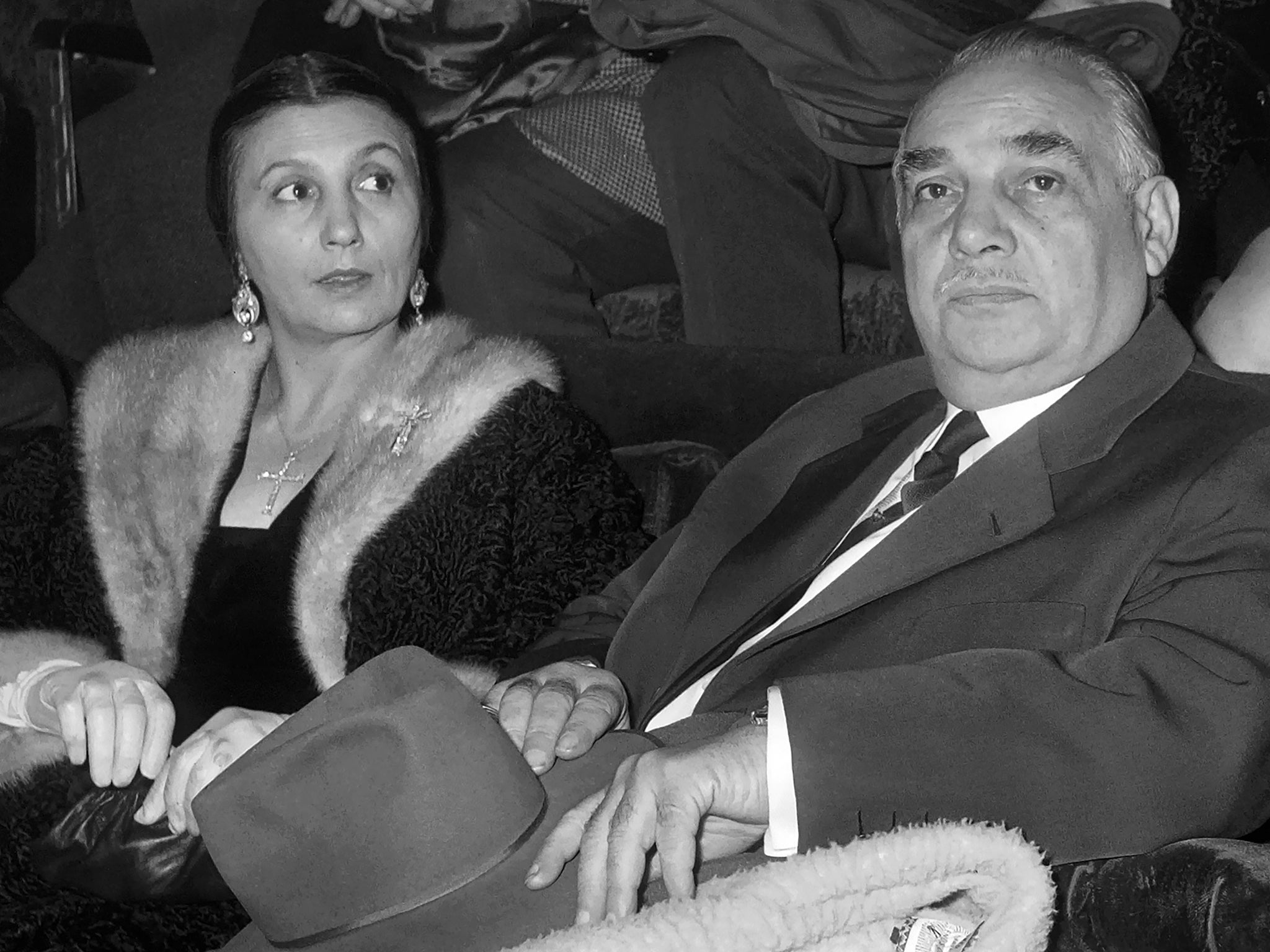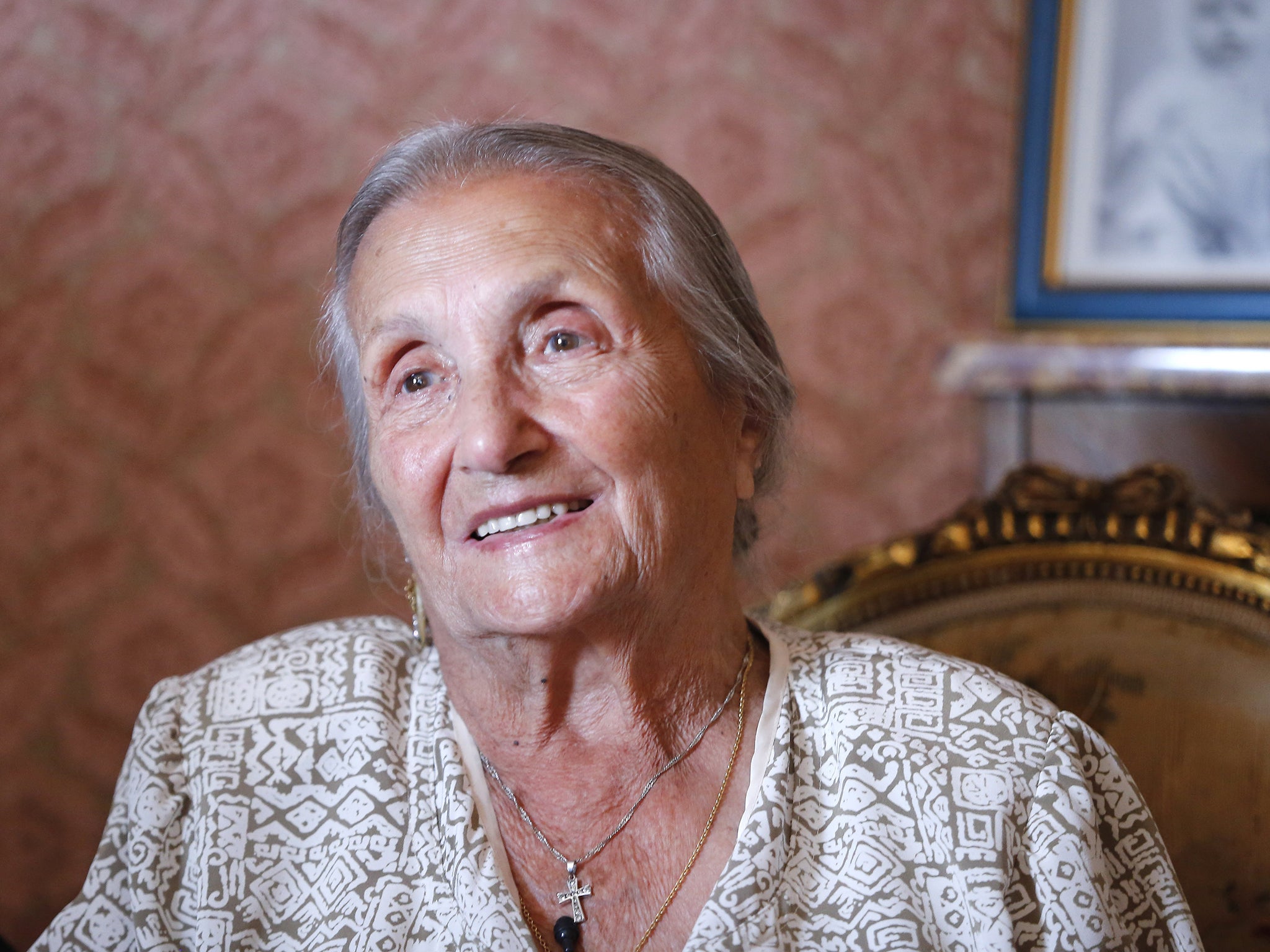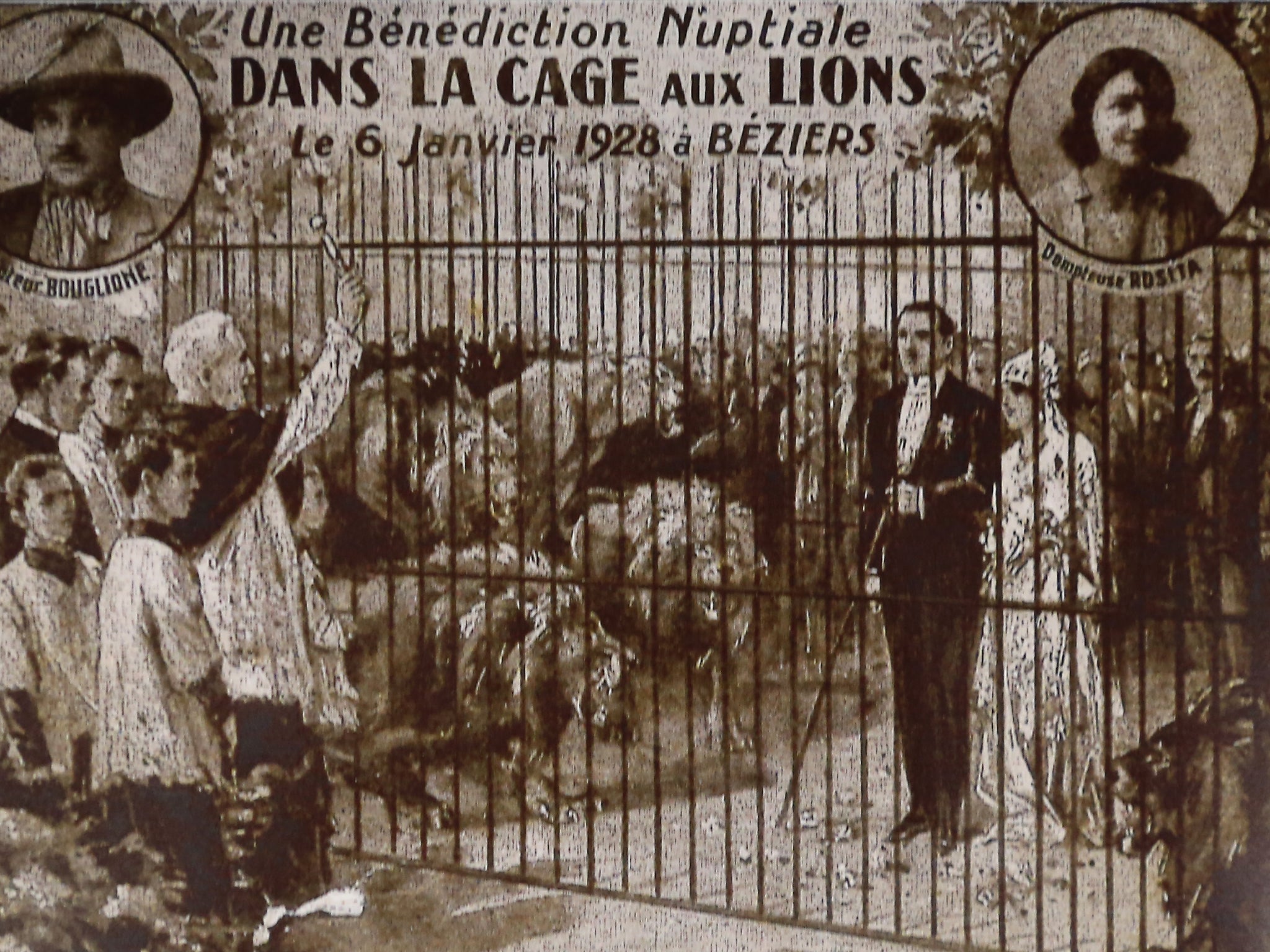Rosa Bouglione: France’s queen of the circus who got married in a cage of lions
In a career spanning more than 80 years, she and her husband Joseph gained fame across the world as the masters of the big top

Your support helps us to tell the story
From reproductive rights to climate change to Big Tech, The Independent is on the ground when the story is developing. Whether it's investigating the financials of Elon Musk's pro-Trump PAC or producing our latest documentary, 'The A Word', which shines a light on the American women fighting for reproductive rights, we know how important it is to parse out the facts from the messaging.
At such a critical moment in US history, we need reporters on the ground. Your donation allows us to keep sending journalists to speak to both sides of the story.
The Independent is trusted by Americans across the entire political spectrum. And unlike many other quality news outlets, we choose not to lock Americans out of our reporting and analysis with paywalls. We believe quality journalism should be available to everyone, paid for by those who can afford it.
Your support makes all the difference.Rosa Bouglione, who danced with big cats as a teenager, was married inside a lion cage and formed a French circus dynasty that made her the queen of the big top for more than eight decades. She was 107 and lived around the corner from the Cirque d’Hiver (Winter Circus), the 19th-century theatre that she and her husband helped rescue from financial disarray and turned into one of the world’s pre-eminent circus venues.
Bouglione, known as Madame Rosa, was one of the last links to an era in which clowns, acrobats, lion tamers, trapeze artists, jugglers and other circus performers were a source of international renown and national pride – considered “artists”, as The New York Times once put it, in a 1950 dispatch on the Paris circus scene, “to be judged as critically as any other virtuosi”.
At the Cirque d’Hiver, which her husband, Joseph, acquired with his three brothers in 1934, Bouglione helped oversee nautical shows, acrobatic performances, operettas, ballets and pantomime productions like The Idol of Shangha and Adventures of the Princess of Sheba. She and her husband, an animal trainer she likened to a Gallic cowboy, both came from Romany circus families, and went on to lead Bouglione circus acts on tours across Europe, Africa, Asia and South America.

Their audiences regularly numbered into the thousands and included entertainers such as Marlene Dietrich, Ingrid Bergman and Josephine Baker, who gave Bouglione costume suggestions, as well as French politicians like Vincent Auriol and Georges Pompidou.
Maria Callas, the famed opera singer, was once nearly flattened by a “jealous” elephant, Bouglione said, when she came too close to Joseph Bouglione after a show.
While Bouglione came to spend most of her time as an offstage ringmaster, she was a regular presence in European newspapers and magazines, a circus matriarch whose highwire career survived the Nazi occupation of Paris and the occasional animal mishap, including when a herd of elephants escaped while her circus was on tour.
On a flight from Saigon to Paris, the New York Herald Tribune reported in 1948, a panther came loose in the plane’s baggage compartment, “either because its cage was insufficiently firm or because a press agent for the Bouglione Circus thought it would be a good idea”. The panther was convinced after several hours to return to its cage.
A few years later, Bouglione’s circus was travelling to Latin America when a storm nearly sank their ship, leading the captain to insist they throw their 12 elephants overboard. The elephants were spared when the sea suddenly grew calm.

Bouglione insisted she was as comfortable with animals as she was with people, and boasted that she once trained a parrot in the art of profanity, used a hat box to smuggle a baby gorilla inside her hotel, and developed a close connection with a leopard named Mickey. After he died, of old age, she memorialised him by turning him into a rug.
“I’ve always, always been with lions, with panthers, with wolves, with hyenas,” Bouglione said in 2014. “I was never scared.”
She was born Rosalie Van Been in 1910, in a horse-drawn caravan travelling near Brussels. At the head of the train was her father, animal trainer Jules Van Been, who oversaw an operation that eventually grew to 100 carts.
Rosa, as she became known, joined him inside the lion cage as a teenager, performing “la danse serpentine” – a flowing, long-skirted dance that was performed without the aid of snakes (though she later handled anacondas). “The most dangerous thing was to enter the cage with the lions,” she said. “But Daddy was there, and he paid attention, so I was not scared.”
She was 17 when she married Joseph Bouglione inside a cage filled with lions, in a ceremony that was illustrated and featured on French postcards and newspaper covers, and used for the title of her 2011 memoir, A Wedding in the Lions’ Cage. The priest was instructed to perform the ceremony while standing safely outside the cage.
The Bougliones worked with American hunter William Buffalo Bill Cody’s Wild West shows, according to BBC News, before purchasing the Cirque d’Hiver. The ornate, 20-sided venue opened in 1852 just outside the Marais district in Paris, where it served as the city’s primary circus theatre before being joined by the Cirque Medrano in the Montmartre neighbourhood.
By the 1960s, Bouglione and her husband had become so successful that a nationally broadcast circus program was produced at the theatre. International broadcasts soon followed, delivering Olympics-style circus events to viewers in the United States.
Yet the rise of television, the Bougliones said, led to a gradual decline in their audiences. By the mid-1980s they had stopped touring altogether and had begun to pass control of the circus on to their children.
Joseph Bouglione died in 1987. According to her family, Bouglione is survived by 55 children and grandchildren. And while the venue she helped popularise remains in her family’s control, its schedule is now filled with concerts, wrestling matches and other live events free of snakes and somersaults.
A somewhat staged version of its circus heyday remains preserved on celluloid, captured in the 1956 film Trapeze. Shot at the Cirque d’Hiver and directed by Oscar-winning filmmaker Carol Reed, the movie features Burt Lancaster, Tony Curtis and Gina Lollobrigida as circus performers caught in a love triangle.
Behind the scenes, Cirque d’Hiver’s proprietors were credited with procuring a stunt animal for a shot in which Lancaster – a former circus acrobat – appeared alongside a lion.
Yes, Joseph Bouglione told the actor, he could practically guarantee his safety during the scene. “If by ‘practically’ you mean no more than the loss of an arm, then it’s a deal.” Lancaster replied, according to The Times.
Rosa Bouglione, circus performer, born 21 December 1910, died 26 August 2018
© Washington Post
Join our commenting forum
Join thought-provoking conversations, follow other Independent readers and see their replies
Comments